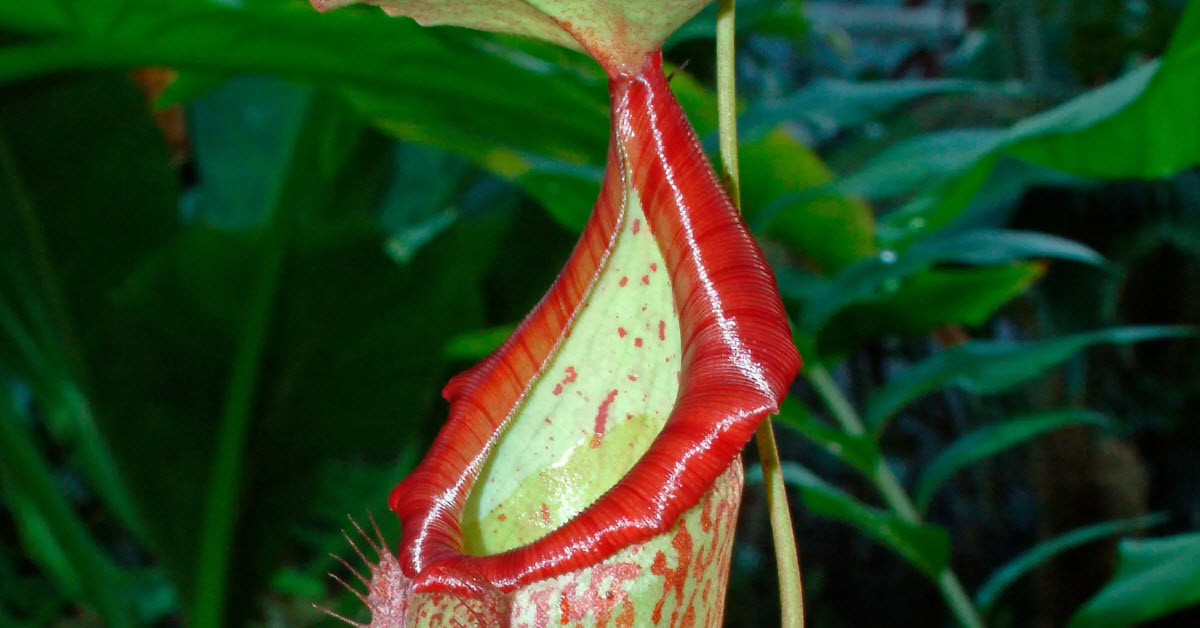http://3.bp.blogspot.com/-VxDUQAvWf5w/XDISySyxV-I/AAAAAAAABRs/YCqwOC6wzPAaDXcYs3P7yjgMrhiOsuw0gCK4BGAYYCw/s1600/2019-01-06_20-06-48.jpg
Sponsored Links

Sponsored Links
When I was a kid growing up in southeast Asia, I was fascinated by the bizarre native nepenthes pitcher plants I’d see on rainforest walks, not to mention the dramatic time-lapse sequences of David Attenborough documentaries. Yet even in those ideal, year-round tropical conditions, I could never get the damn things to grow. A frustration that was made even worse by a visit to Kew Gardens on holiday, where I saw the most magnificent specimens tumbling out of hanging baskets and trained over trellises. As they say, desire plus frustration equals obsession, so – 30 years later – I think I have finally cracked it. To share the love, here are my secrets (many of which are the opposite of what the textbooks say) to growing these spectacular plants indoors .
Sponsored Links
Almost anyone who has bought a nepenthes, laden with pitchers, and brought it home will know the story. It looks great for a couple of weeks, but soon after, the tips of the pitchers start to turn crisp and brown, eventually it works its way down to where the trap joins the rest of the leaf. This was my experience for years, creating plants that, despite being sort-of alive, didn’t have any traps or make any new ones.
Sponsored Links
Trap formation and retention on pitcher plants is directly related to humidity. As UK homes lack these sky-high moisture levels, this can be difficult to recreate outside of a terrarium. Yet, even in the sweltering conditions of southeast Asia, the same thing can be a problem. So what can you do?
The secret is simple: water. A lot of water. I keep my plants in pots without drainage, in growing media that is permanently saturated. Once a week, I fill the pot right to the top, so the water reaches the brim, about 1cm above the level of the compost – and never let it stop being as wet as a bog. Thanks to this I now have four nepenthes growing away happily, all of them outside the sealed confines of a terrarium. Despite living in an area with very hard tap water, I ignore the advice of only using bottled water and have had zero problems.
When I started ignoring the advice about never feeding them, as doing so resulted in them exhibiting yellowing leaves (a tell-tale sign of nutrient deficiency), their growth rate almost doubled. I don’t feed them heavily, just a half-strength liquid houseplant feed once a month, but the effect is dramatic and to me essential to success. And no, I don’t run around trapping insects to feed them. They don’t need it.
Finally, these plants are light hungry, so only grow them on a spot within 1m of a window, ideally a south-facing one as these are exposed to more sunlight. Don’t have a spot like that? No problem, just set up a grow light. There are now energy-efficient LED bulbs, which are very affordable and will fit into any desk lamp. But you do have to have one or the other to give them the light they need. After decades of trial and error, I have found if you do these three things, the plants are easy to keep and surprisingly fast growing. If only I’d known this back in 1989!
Email James at james.wong@observer.co.uk or follow him on Twitter @Botanygeek
guardian.co.uk © Guardian News & Media Limited 2010
Published via the Guardian News Feed plugin for WordPress.
Sponsored Links
How to grow pitcher plants at homehttps://is.gd/PAUpcd











0 comments:
Post a Comment